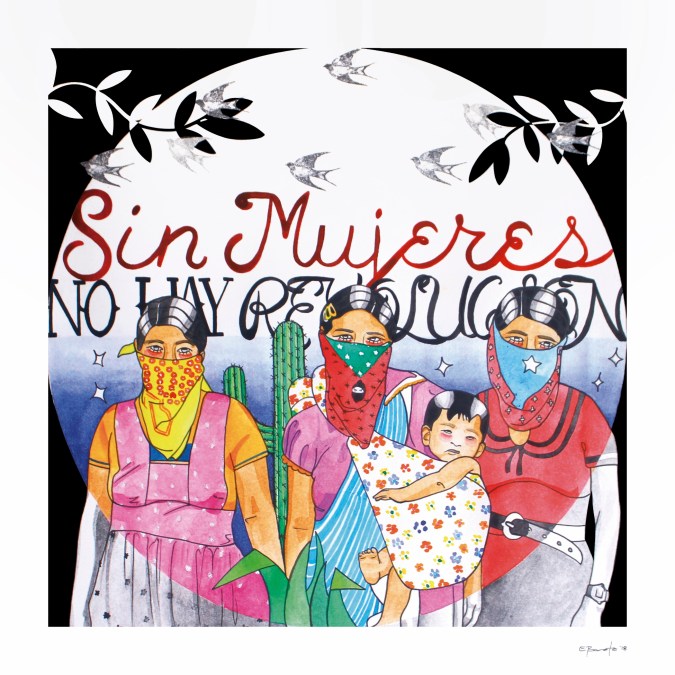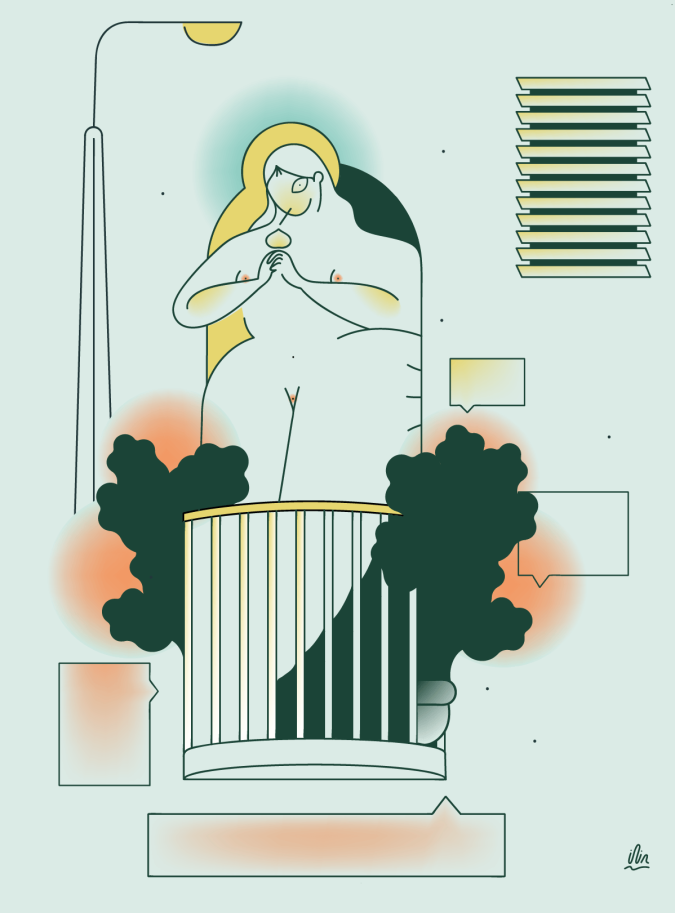The Museo de Arte de Puerto Rico got a new temporary collection last week – much to its surprise. Local art collective Contrabando debuted Hijack! on Wednesday, wherein 20 of the museum’s existing pieces were replaced with new work from 14 independent Puerto Rican artists. But no paintings were harmed in the process: Hijack! is experienced virtually. Once inside the museum, visitors explore using the Layar app, which superimposes works atop those already hanging in the galleries, obscuring them entirely. It may be a harmless rebellion, but the exhibit is nonetheless a solid critique against the institution, as well as of the art world generally.
Who decides what is art? Who decides where those artists can display their work? Especially in Puerto Rico, where galleries and art spaces are limited by the island’s continued (and, after Maria, worsened) economic strife, those questions are especially relevant. Exploring them was part of the mission for Contrabando organizers Adrian Martínez and Paola Vargas Aymat, who aimed to make “invisible art visible.” By choosing the Museo de Arte de Puerto Rico, that effort expanded into a disruption of the status quo.

“We were really fearing a negative response [from the museum],” Vargas Aymat says. “We didn’t want to overstep. We just wanted to give a space for the local artists, so we made this exhibition for them. We didn’t want [the museum] to think that we’re doing this with bad intentions.”
The museum released a statement Thursday night in support of the exhibit, even including viewing directions. Hijack did, after all, draw a crowd on opening day. While organizers timed its debut with the weekly free window when entry is waived, attendance was far greater than usual. By Thursday afternoon, Martínez says, the app had counted more than 150 unique visits and 3,000 page views.

The artists were given free rein in their contributions. “We told them, you pick the works you want, and if you want to make a commentary on this piece, you’re welcome to, but you’re not limited to discussing the piece,” Martínez adds. “They had the freedom to choose the piece they wanted and express themselves however they want.”
Many chose to engage with the works in some form, like a piece by Rafael Vargas Bernard, who’s currently based in Miami. Replacing José Campeche’s Las hijas del gobernador Ramón de Castro, his piece, Las pajas del gobernador, swaps the portrait of two delicately dressed blonde daughters with a critique of Governor Ricardo Rosselló’s post-Maria response. With natural devastation in the background, the noose in the foreground seem to reference the island’s ongoing mental health crisis.
For Puerto Rican art historian and curator Marina Reyes Franco, Hijack was subversive in its use of space without criticizing the art itself. “It’s more responding to the politics of an institution that doesn’t let young artists in,” she says.
Their only access, Reyes Franco adds, is through an award offered by Lexus that the museum is paid to host. Sometimes they’ll invite young artists to participate in an annual auction, but that equates to “donating to an institution that doesn’t support them back.”
Founded during the ‘90s while Governor Pedro Rosselló, father of the current governor, was in office, the museum has remained “very closely linked to the government,” she says, “but in a way that has always been partisan.” Current First Lady Beatriz Rosselló is honorary president of the annual gala at the museum. It’s always been the “museo PNP,” Reyes Franco says, referring to the pro-statehood New Progressive Party.

Other works in Hijack make social commentary or reference socio-political movements, like Ilia Isales’ Tu salud en la 5ta Ola del Feminismo. There are cultural nods, too, like Steph Segarra’s photographic portraits of subjects wearing masks by Poncili Creación, replacing Héctor Méndez Caratini’s images of vejigante masks worn in the town of Loíza. There’s even a portrayal of la nueva religión – reggaeton and trap – in El CoCa’s piece, essentially updating La nueva plena.
Martínez and Vargas Aymat say they plotted for two months in preparation for Hijack – during the free Wednesday windows, of course. “We thought they might suspect us,” Martínez says. “Like, why are these people coming to the museum so much? They never figured it out though, so the planning was smooth.”
Whether or not the Museo de Arte de Puerto Rico will invite these artists (or any other young artists) into future programming as a result of Hijack is unclear – but Reyes Franco hopes some change will come. The Museo de Arte Contemporáneo, located only about a mile away, regularly engages with young artists.
“Even if we’re saying that one is a museum of contemporary art and one is the Puerto Rican [art] in general, like an encyclopedic museum, it’s not,” she says. “The current exhibition has been since there since 2012. It’s the same exhibition for six years. What the hell have they been doing?”
Check out a preview of the virtual exhibition below.




